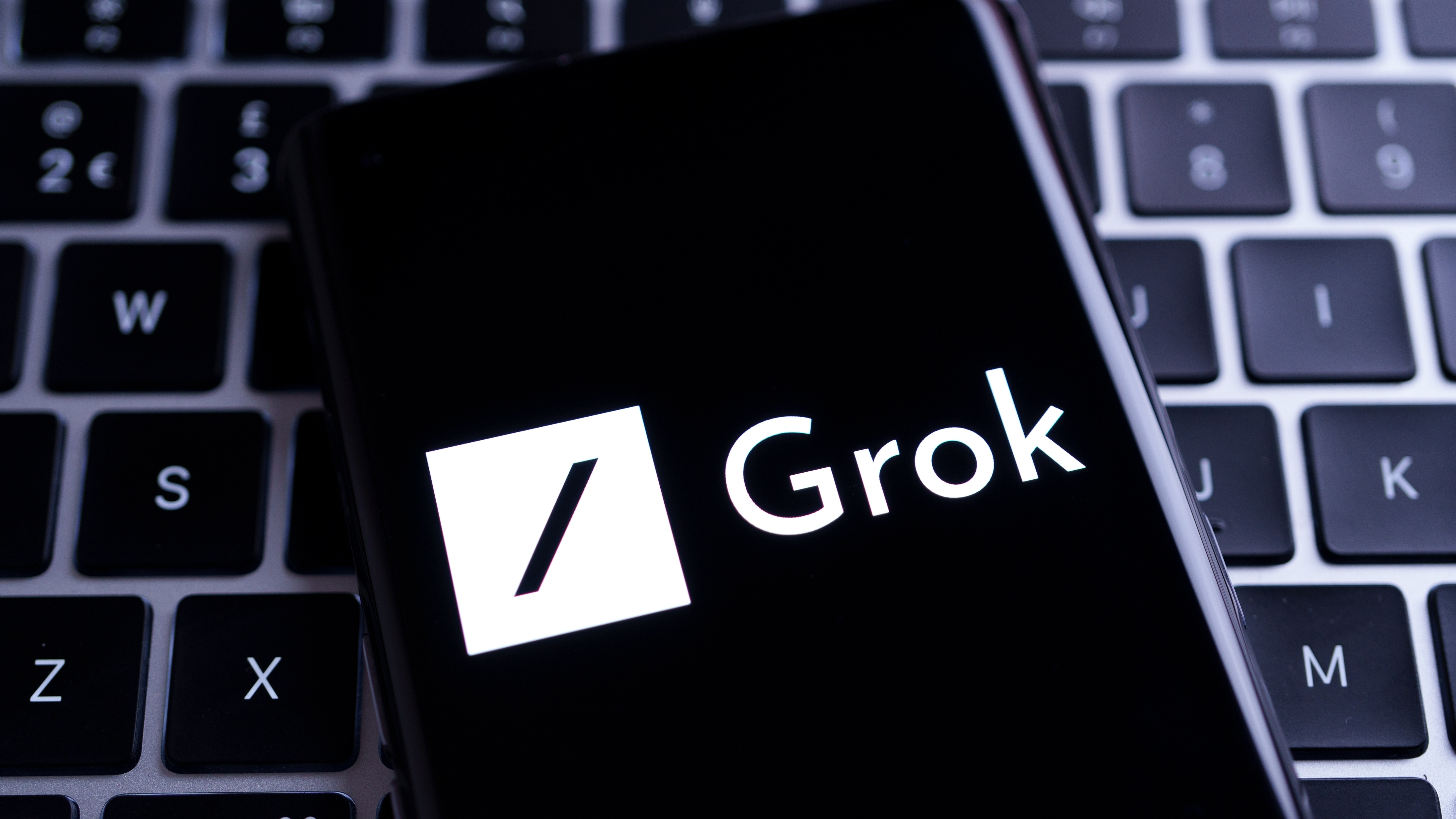
Grok, the AI assistant developed by xAI, has quickly evolved from an early prototype into a competitive player in the AI space. Founded by Elon Musk in July 2023, xAI aims to advance artificial intelligence with the goal of deepening human understanding of the world. Since its launch, Grok has undergone rapid development, positioning itself alongside established AI models from companies like OpenAI and Google.
Now, onto the fourth version with Grok 4, this AI model has gone from strength to strength. However, it has equally managed to cause controversy at every turn.
The origins of Grok
The name Grok comes from the 1961 science fiction novel Stranger in a Strange Land by Robert A. Heinlein. In the book, "grok" is a Martian word that means to deeply understand something in a way that transcends language—essentially to fully and intuitively grasp a concept as if becoming one with it.
Elon Musk and xAI likely chose the name Grok to reflect the AI’s goal of deeply comprehending and reasoning about the world, rather than just responding with surface-level information. The name aligns with xAI’s mission of advancing AI’s understanding of the universe.
xAI was established with a stated mission to “understand the true nature of the universe.” With Grok, the company set out to create an AI model that provides informative and engaging responses while integrating real-time data from X (formerly Twitter). Launched in November 2023 as a beta chatbot for X Premium users, Grok was designed to offer insightful, context-aware answers, with an emphasis on reasoning and adaptability.
Despite being introduced as an early-stage product, Grok demonstrated rapid iteration. Developed in just two months, its initial beta phase laid the foundation for significant improvements, supported by a team of AI researchers and engineers with experience from DeepMind, OpenAI, and Tesla.
Grok-0 the original Grok prototype
Grok-0, the first iteration of the model, featured 33 billion parameters and demonstrated strong performance despite being trained with fewer resources than larger competitors. In benchmarks such as MMLU (multidisciplinary questions) and GSM8K (math word problems), it performed comparably to models with significantly higher parameter counts, highlighting xAI’s focus on efficiency and optimization.
Grok-1
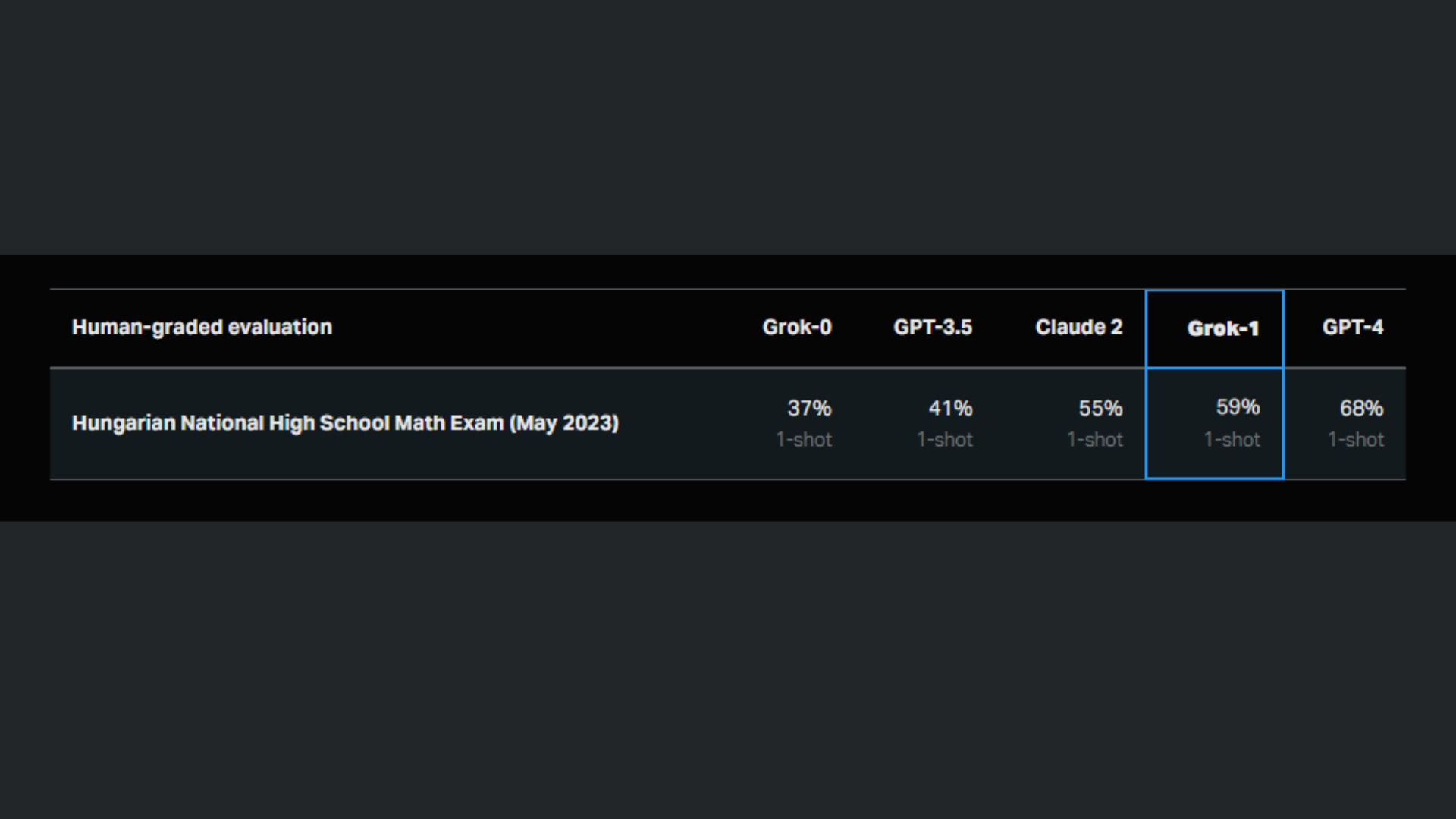
In October 2023, xAI introduced Grok-1, a 314-billion-parameter Mixture-of-Experts (MoE) model. MoE architectures improve efficiency by activating only a fraction of the model’s total parameters per task, making them highly scalable. Grok-1 was later released as an open-source model under the Apache 2.0 license in March 2024, allowing developers to explore its architecture and capabilities.
Benchmarks placed Grok-1 ahead of models like Meta’s LLaMA 2 (70B) and OpenAI’s GPT-3.5 in several areas, though it remained behind more advanced models such as GPT-4. Key technical features included Rotary Positional Embeddings (RoPE) for improved sequence handling and a large token vocabulary to support diverse language tasks.
Grok-1.5
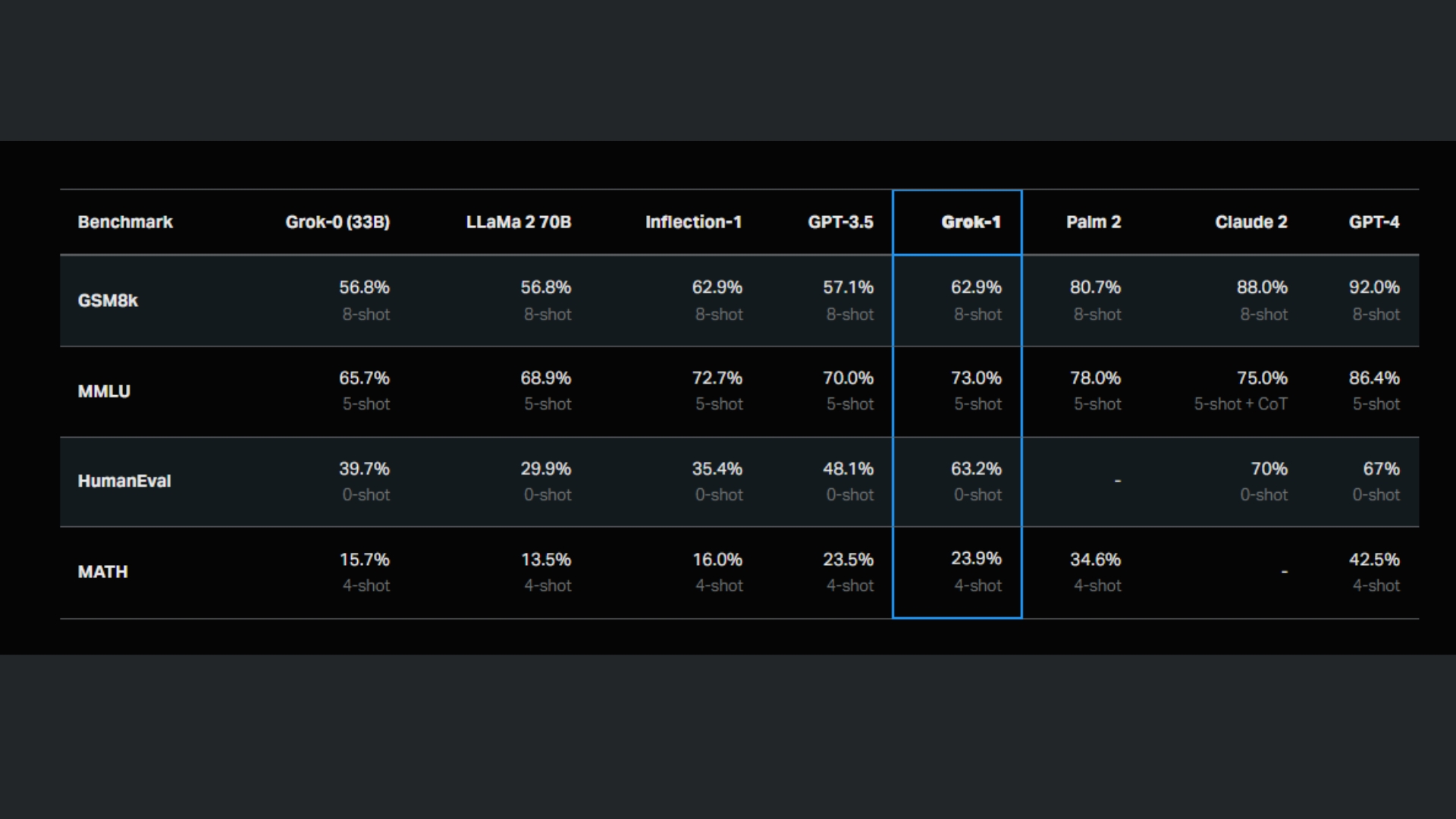
March 2024 saw the release of Grok-1.5, which introduced a significantly longer context length of 128,000 tokens—16 times greater than its predecessor. This improvement enabled more coherent long-form responses and better handling of complex, multi-step reasoning tasks. Shortly after, xAI launched Grok-1.5V, incorporating multimodal capabilities that allowed the model to analyze and interpret images alongside text.
Grok-2
In August 2024, xAI released Grok-2 and Grok-2 mini, improving both processing speed and reasoning capabilities. Benchmarks indicated that Grok-2 outperformed competitors such as Claude 3.5 Sonnet and GPT-4 Turbo in several reasoning and coding tasks. Grok-2 mini was optimized for efficiency, balancing speed and accuracy for general-purpose use.
Further updates in December 2024 enhanced Grok-2’s processing speed and accuracy while expanding its multilingual capabilities. xAI also integrated Grok with Aurora, an AI-powered image generation tool, and introduced an enterprise API for businesses.
Grok-3
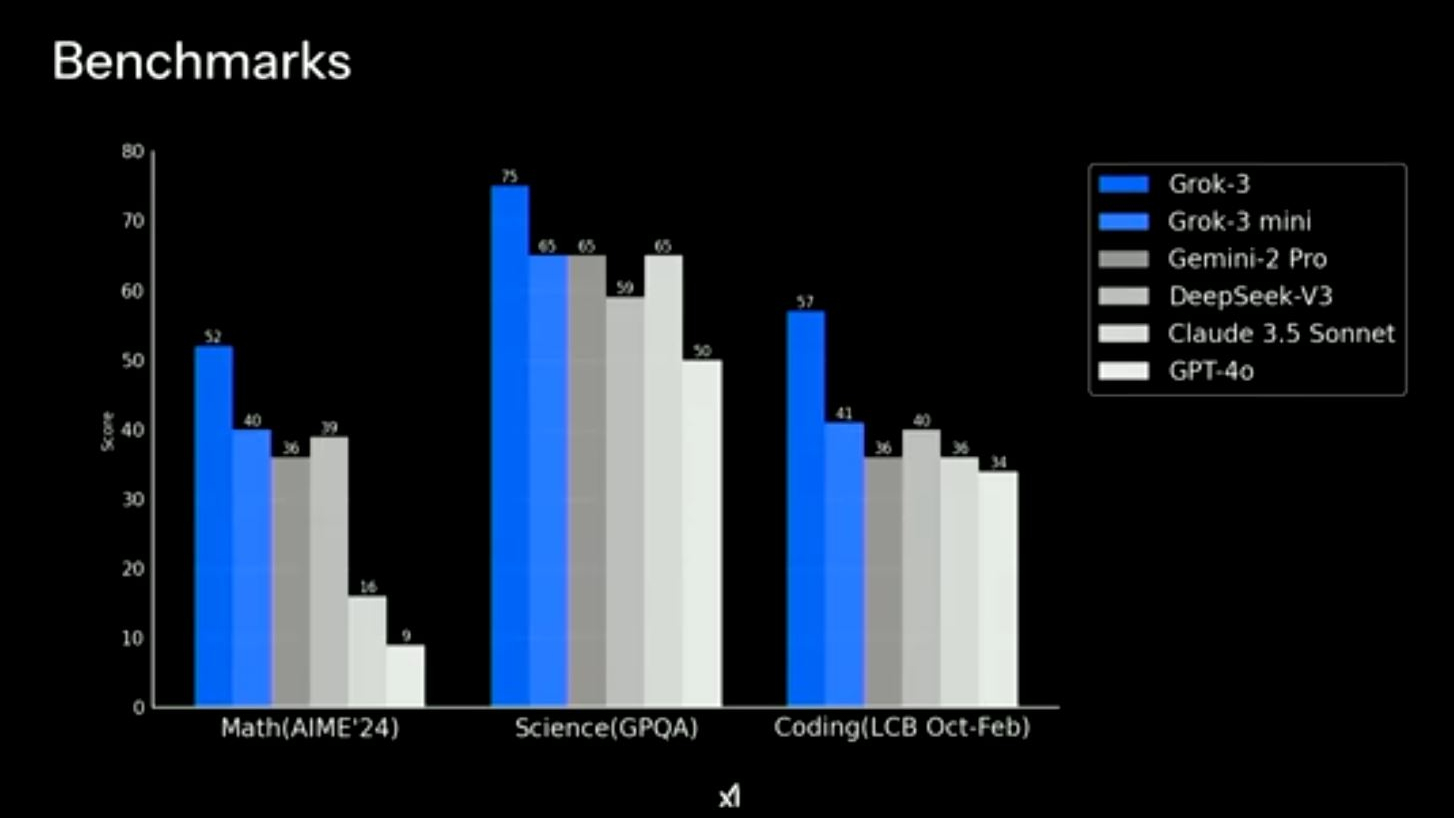
In February 2025, xAI launched Grok-3, a family of models trained using significantly greater compute resources via the Colossus supercluster (featuring 200,000 Nvidia H100 GPUs). Grok-3 and its variations, including Grok-3 Reasoning and Grok-3 mini, focused on improving logical reasoning, mathematical problem-solving, and real-time data processing.
Early benchmarks suggested that Grok-3 outperformed GPT-4o in specific areas such as mathematical reasoning (AIME), scientific problem-solving (GPQA), and coding (LiveCodeBench). New features included “DeepSearch,” a tool designed to provide in-depth web-based research capabilities, and a “Think” mode for more structured reasoning.
Grok 4
The latest version of Grok launched on July 9, with a big press conference revealing all of the details.
Grok 4 puts the focus of xAI's tool on a few areas. Most notably, it saw major improvements to reasoning, with Elon and his team claiming it had scientist-grade reasoning. Or in other words, it is incredibly intelligent.
It brings about a coding mode, which can help write, debug, and explain code more efficently, and brought in a natural voice feature, looking to compete with Gemini and ChatGPT's live voice modes.
Musk and his team made a point of highlighting Grok 4's ability to understand internet content and memes. This makes it potentially the most "online" AI chatbot, fitting into Musk's branding.
AI architecture
Grok’s models leverage modern AI frameworks such as Kubernetes, Rust, and JAX for efficient scaling. The MoE architecture remains a key differentiator, allowing xAI to optimize performance without significantly increasing computational costs. Training data sources include publicly available web content, X posts, and other structured datasets.
As the models continue to evolve, context lengths have expanded significantly, from 8,192 tokens in Grok-1 to 128,000 in Grok-3, enhancing their ability to process lengthy documents and multi-turn conversations.
User experience and accessibility
Grok offers a unique conversational style, often incorporating humor and a casual tone in its responses. It is currently available through X Premium+ ($40/month or $395/year) with additional distribution planned through standalone applications for iOS and Android. Features such as real-time event tracking, image generation, and expanded search capabilities provide a range of functionalities for users.
However, as with any AI model, challenges remain. Early iterations of Grok faced limitations in accuracy, and its reliance on X for real-time updates has led to discussions about potential biases in its training data. xAI continues to refine its approach, with plans for future iterations and additional open-source releases.
Looking ahead
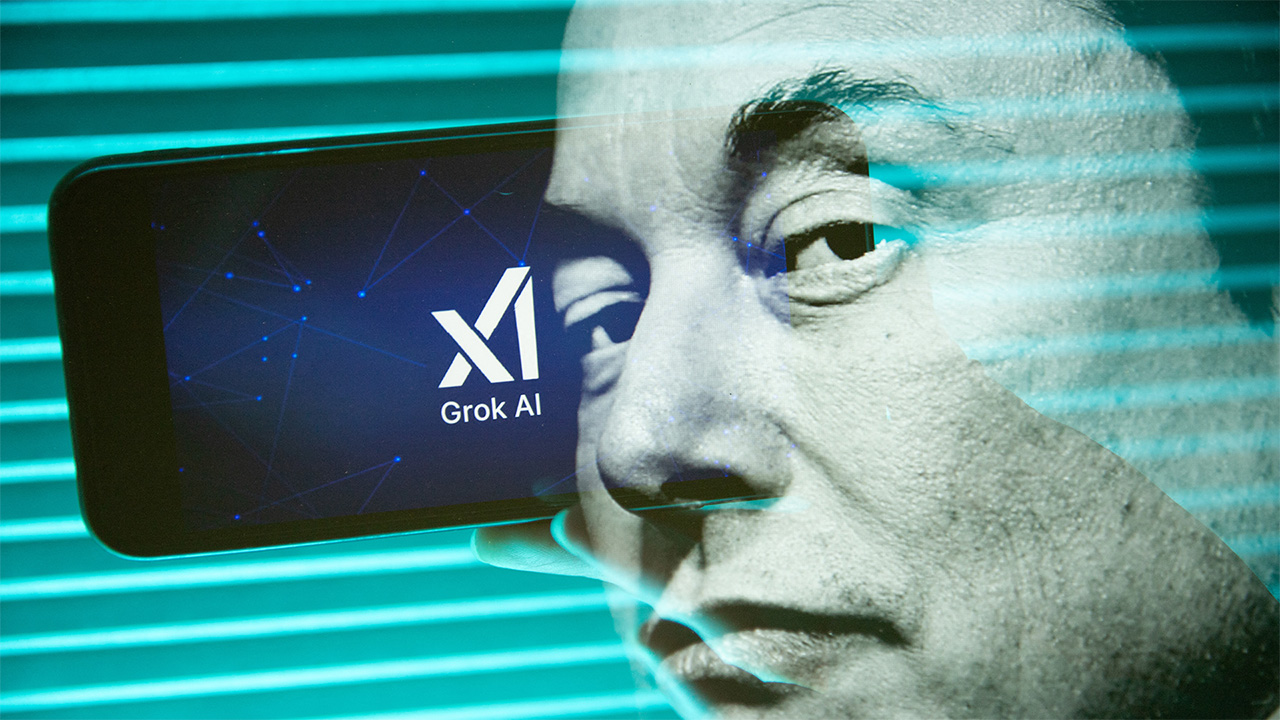
Elon Musk has hinted at continued expansion, including Grok-4 and future AI models leveraging even larger compute infrastructure. xAI has also explored AI applications in gaming and other interactive domains. While ethical considerations such as privacy, bias, and misinformation remain central to AI discussions, xAI’s pace of development suggests that Grok will remain a notable player in the evolving AI landscape.
With ongoing updates and enhancements, Grok continues to establish itself as a distinctive AI assistant, balancing real-time data access with advanced reasoning capabilities. As the field of AI progresses, Grok’s trajectory will be shaped by both technological advancements and broader discussions on responsible AI deployment.







